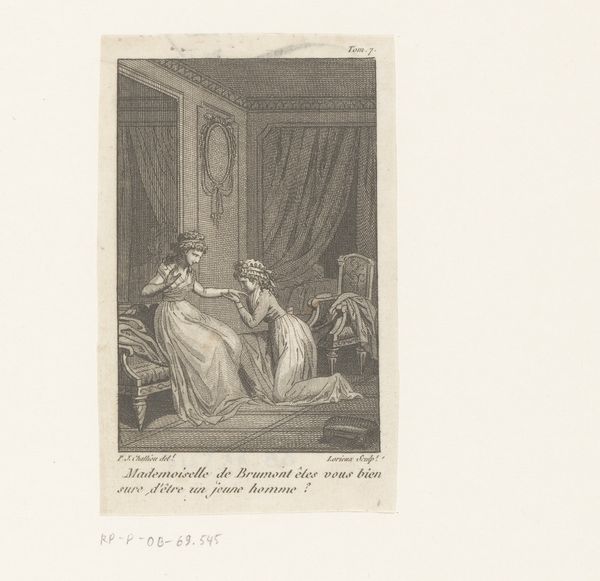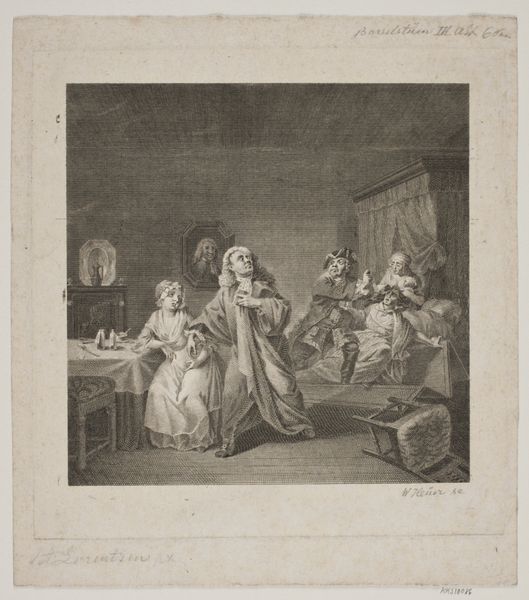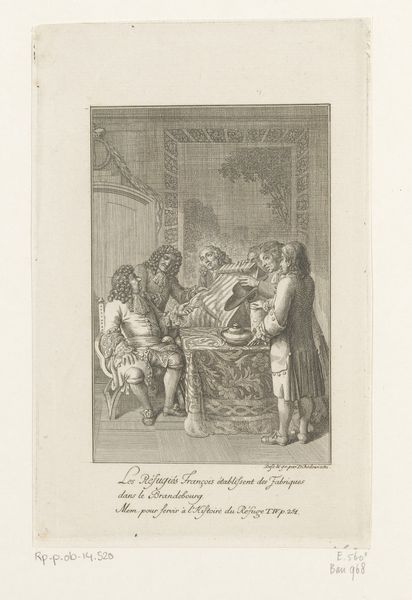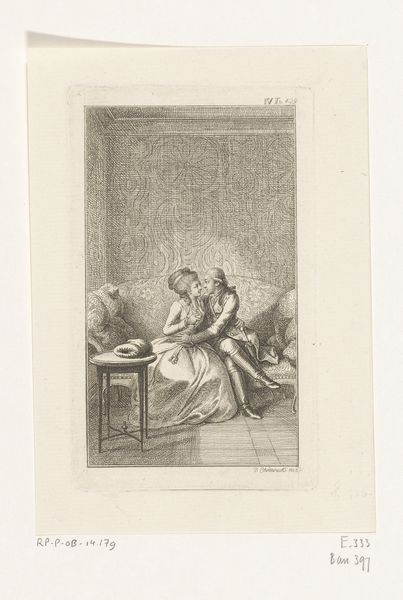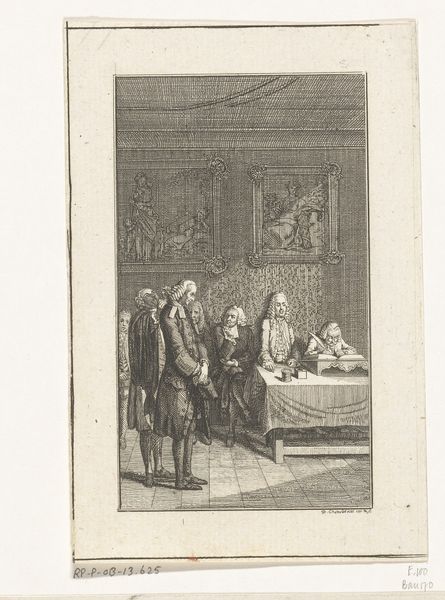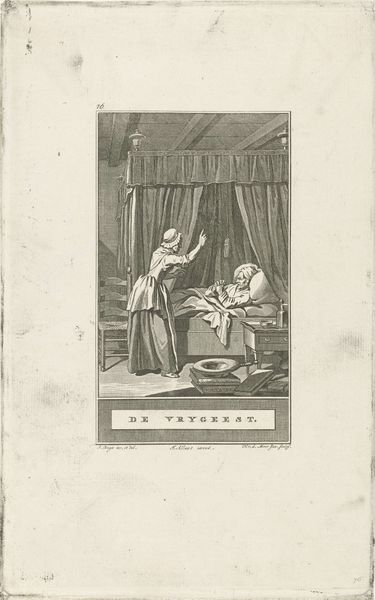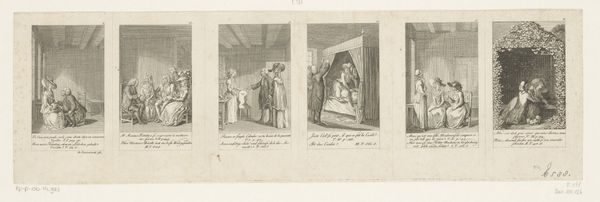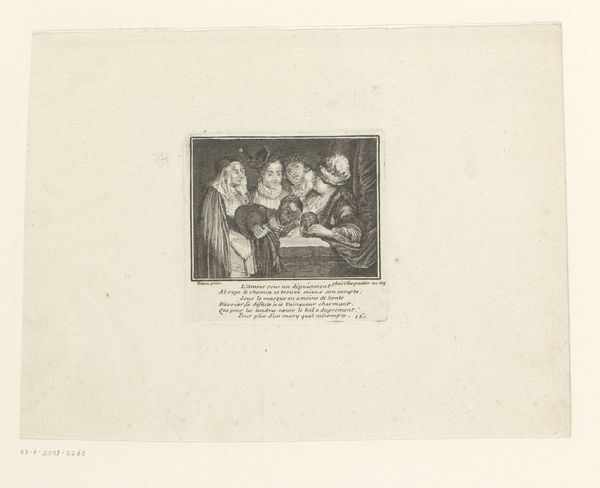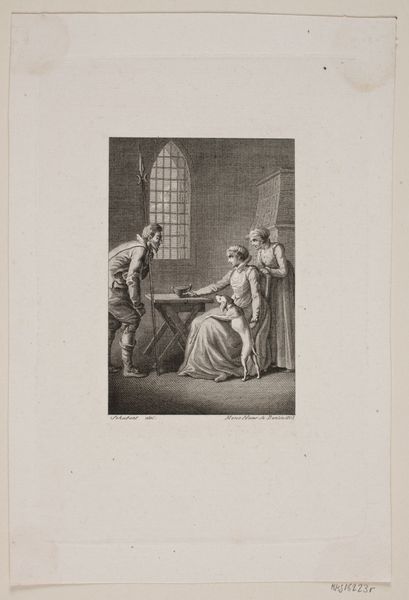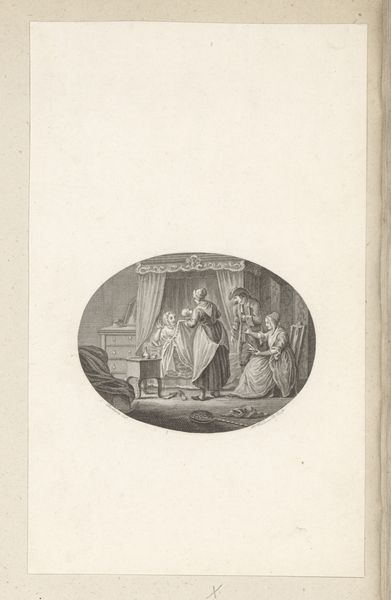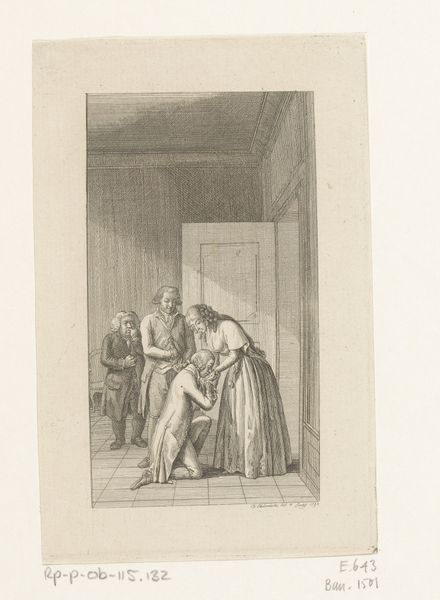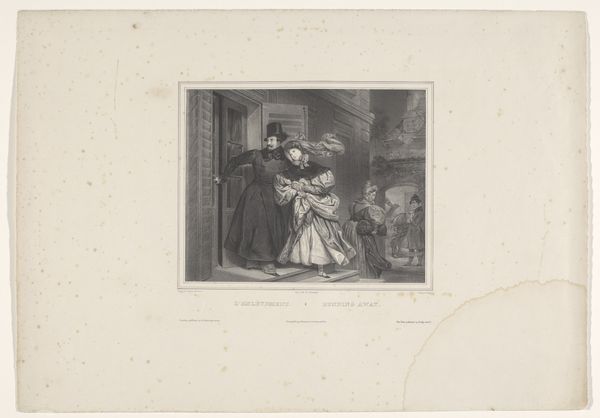
print, paper, engraving
#
neoclacissism
# print
#
figuration
#
paper
#
genre-painting
#
history-painting
#
engraving
Dimensions: height 122 mm, width 76 mm
Copyright: Rijks Museum: Open Domain
Curator: This intriguing piece is "Kaartlegger" created around 1790 by Daniel Nikolaus Chodowiecki, currently held at the Rijksmuseum. It is an engraving on paper. Editor: Immediately, the crosshatching is the first thing I see: the lines pressed so close together. It gives a wonderful, muted density to the scene. Is the old crone casting a spell, or maybe swindling an innocent girl? Curator: I think the charm here is in the mundane magic of it. It's just divination. It is genre painting meeting history, and typical of neoclassicism interest in the everyday. The artist is best known for book illustrations; so it's almost like a scene lifted from a novel. Editor: Lifted directly onto the page. We see so many reproductive prints then because of advances in intaglio printing making them less cumbersome and much cheaper than other techniques. A democratization of art that allows us a closer examination of the lives and leisure activities of ordinary people. The way those cross-hatch lines form clothes… remarkable. Curator: Precisely. Look closely. You’ll see a narrative unfolding, perhaps a clandestine reading in hushed tones. I imagine whispers and anxieties intertwining. It almost feels like a peek into someone’s destiny as cards are laid out. It certainly captures a mood. Editor: Absolutely, and you can trace all the steps needed: from gathering the paper and preparing the metal plates, to printing. It puts focus back on the means through which information and artistic interpretation were disseminated, turning production itself into content, art into labour. Even that card table, simply made: form and function. Curator: Yes, the scene's magic is subtle, but quite engaging. There's the power of storytelling—a shared experience that has an inexplicable, irresistible lure to discover something that resonates personally, no matter how obscurely presented. Editor: I think its charm comes from a story written on a surface using basic materials. The scene's apparent humbleness reveals hidden networks that shape what and how art gets distributed—like our chat itself—illuminating social bonds that were once deemed separate, like a parlor and workshop, merging into a single frame.
Comments
No comments
Be the first to comment and join the conversation on the ultimate creative platform.
